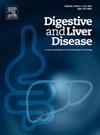从边缘到常规和超越的旅程:意大利肝移植中DCD应用的单中心经验
IF 3.8
3区 医学
Q1 GASTROENTEROLOGY & HEPATOLOGY
引用次数: 0
摘要
背景:心血管确定死亡(DCD)后的捐赠扩大了肝移植的供体池,但历史上由于供体热缺血时间(DWIT)延长,结果较差。尽管在供体管理和移植结果方面有所改善,但意大利心脏心脏无收缩期延长带来了更高的移植风险。本研究在意大利的一个大容量中心评估了DCD肝移植的趋势,评估了供体和受体的概况以及随着时间的推移的修复策略。方法本前瞻性研究纳入2016 - 2023年接受DCD肝移植的成人患者。移植后结果、供体特征和受体概况在两个时期(2016-2021年与2022-2023年)进行比较。结果纳入75例患者。后期的接受者有更严重的肝脏疾病(39.1%对17.2% Child-Pugh C, p=0.045)和更高的风险评分。后期的供者年龄较大(中位72岁vs. 62岁,p=0.022),更常以延长标准为特征,供者风险指数和欧洲移植供者风险指数较高;此外,移植后期的HOPE更长,缺血时间更短。尽管供体和受体相关的危险因素增加,移植物功能障碍、再移植和存活率保持稳定。自DCD计划开始以来,供体和受者相关风险评分与时间呈线性相关;HOPE持续时间随时间线性增加,缺血随时间线性减少。结论随着经验的积累,供体和受者的风险状况随着时间的推移而增加。通过更广泛和有效的修复策略,移植后的结果保持稳定,这表明即使在高风险的意大利环境中,扩大DCD应用的可行性。本文章由计算机程序翻译,如有差异,请以英文原文为准。
A journey from marginality to routine and beyond: single center experience with DCD utilization for liver transplantation in Italy
Background
Donation after cardiovascular determination of death (DCD) has expanded the donor pool in liver transplantation but historically showed inferior outcomes due to prolonged donor warm ischemia time (DWIT). Despite improvements in donor management and transplant outcomes, Italy’s prolonged asystolic periods pose a higher transplant risk. This study evaluates trends in DCD liver transplantation at a high-volume Italian center, assessing donor and recipient profiles as well as reconditioning strategies over time.
Methods
This prospective study included adult recipients of DCD liver transplants from 2016 to 2023. Post-transplant outcomes, donor characteristics, and recipient profiles were compared between two periods (2016–2021 vs. 2022–2023).
Results
Seventy-five patients were included. Recipients in the later period had more severe liver disease (39.1% vs. 17.2% Child-Pugh C, p=0.045) and higher risk scores. Donors in the later period were older (median 72 vs. 62 years, p=0.022), more often characterized as extended criteria and had higher Donor Risk Index and EuroTransplant Donor Risk Index; additionally, transplants in the later period underwent longer HOPE and shorter ischemia times. Despite increasing donor- and recipient-related risk factors, rates of graft dysfunction, retransplantation, and survival remained stable. Donor- and recipient-related risk scores showed a linear correlation with time since DCD program’s inception; also HOPE duration increased and ischemia decreased linearly with time.
Conclusions
Donor and recipient risk profiles have increased over time with accumulated experience. With more extensive and effective reconditioning strategies, post-transplant outcomes remained stable demonstrating the feasibility of expanding DCD utilization even in the high-risk Italian setting.
求助全文
通过发布文献求助,成功后即可免费获取论文全文。
去求助
来源期刊

Digestive and Liver Disease
医学-胃肠肝病学
CiteScore
6.10
自引率
2.20%
发文量
632
审稿时长
19 days
期刊介绍:
Digestive and Liver Disease is an international journal of Gastroenterology and Hepatology. It is the official journal of Italian Association for the Study of the Liver (AISF); Italian Association for the Study of the Pancreas (AISP); Italian Association for Digestive Endoscopy (SIED); Italian Association for Hospital Gastroenterologists and Digestive Endoscopists (AIGO); Italian Society of Gastroenterology (SIGE); Italian Society of Pediatric Gastroenterology and Hepatology (SIGENP) and Italian Group for the Study of Inflammatory Bowel Disease (IG-IBD).
Digestive and Liver Disease publishes papers on basic and clinical research in the field of gastroenterology and hepatology.
Contributions consist of:
Original Papers
Correspondence to the Editor
Editorials, Reviews and Special Articles
Progress Reports
Image of the Month
Congress Proceedings
Symposia and Mini-symposia.
 求助内容:
求助内容: 应助结果提醒方式:
应助结果提醒方式:


